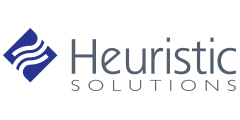Congratulations! You’ve successfully launched your longitudinal assessment as an alternative to a high-stakes exam. As your longitudinal assessment progresses, and gaps in practitioner expertise emerge, how do you make those results actionable?
To put it a slightly different way: How do you shift from the evaluation of competence through assessment to the promotion and improvement of competence through learning?
Ideally, your longitudinal assessment program already delivers the following information to your practitioners:
- Feedback (you answered this question incorrectly)
- Rationale (here’s why)
- References (to learn more about the rationale)
With the right technology, it’s not a heavy lift to further leverage the results of your long-term evaluations. LearningBuilder’s Reflective Practice Exercise (RPE) feature is a tool to take your longitudinal assessments to the next level: contextualizing practitioner assessment data within a certification competency framework, facilitating access to relevant educational content, and enabling lifelong learning.
“How Am I Doing — Really?” Capturing Assessment Data for Reflective Practice
Historically, we humans haven’t proven to be the best at self-assessment. The LearningBuilder RPE can organize longitudinal assessment results within a competency framework, replacing self-assessment with longitudinal assessment.
Over time, as they answer assessment questions, the practitioner gains increased visibility into their standing within a domain area. They can more objectively identify the emerging gaps between the competency model and their longitudinal assessment results. This knowledge equips them to take action.
“What Do I Do About It?” Learning Recommendations in Reflective Practice
Once practitioners have a clear picture of their learning opportunities, the RPE can automatically recommend areas of professional development activities that help them address weaknesses or achieve goals, ensuring that they never stop improving. The RPE also allows practitioners to self-report completed activities or create a network of approved activity providers to report activities on learners’ behalf.
Want to supercharge the practitioner experience? Map relevant educational offerings to your competency model. LearningBuilder’s recommendation engine can provide course suggestions based on practitioners’ priorities and the gaps identified through their assessment data.
When you align courses to the competency model, it makes it easier for practitioners to find and compare courses based on their learning goals. It is up to the education providers (whether a member organization, an educational institution, or someone else in the ecosystem, like a manufacturer or employer) to develop content that meets requirements and appeals to learners. Over time, you and the educational providers will identify domains where content is plentiful and areas of opportunity for additional learning activities.
“How Will I Know?” The Reflective Practice Dashboard and Reporting
We know that ease of use is a non-negotiable for practitioner buy-in. LearningBuilder’s Reflective Practice Exercise dashboard presents a hierarchical representation of competencies listed with action-oriented phrasing. We start with a visual rendering of what practitioners are supposed to know and their progress toward requirements as defined by the program’s Competency Requirements Model.
Practitioners track their progress using familiar conventions that characterize our approach to an online credentialing UX.
They are presented with concrete, measurable steps that offer them agency over their learning. Within the competency model, you’ll have the means to promote specific domains (such as new, or high-risk areas) that matter most in your profession and patient outcomes. Dashboard filters (like filters for priority level or performance gaps) highlight what a practitioner needs to see at any given time. Our flexible configuration parameters allow you to create an RPE tailored to your organizational needs.
Your team also benefits from this “ease-of-use” principle. They can use LearningBuilder’s Reporting Engine to build reports for insights relating to longitudinal assessment results, whether by competency area or demographic characteristics. For example, you can create comparisons between cohorts, year-over-year results, or any other visualizations that help guide your decision-making.
LearningBuilder: Helping Organizations Foster Reflective Practice and Lifelong Learning
Heuristics is committed to making the life of everyone working within your credentialing ecosystem a little easier. We’re also committed to helping you help your constituents — and the public at large — through the promotion of continuing competence. Are you interested in learning more about our tools for longitudinal assessments and reflective practice? We want to hear from you! Schedule an introductory conversation to see if we’re a good fit for your program’s needs.




